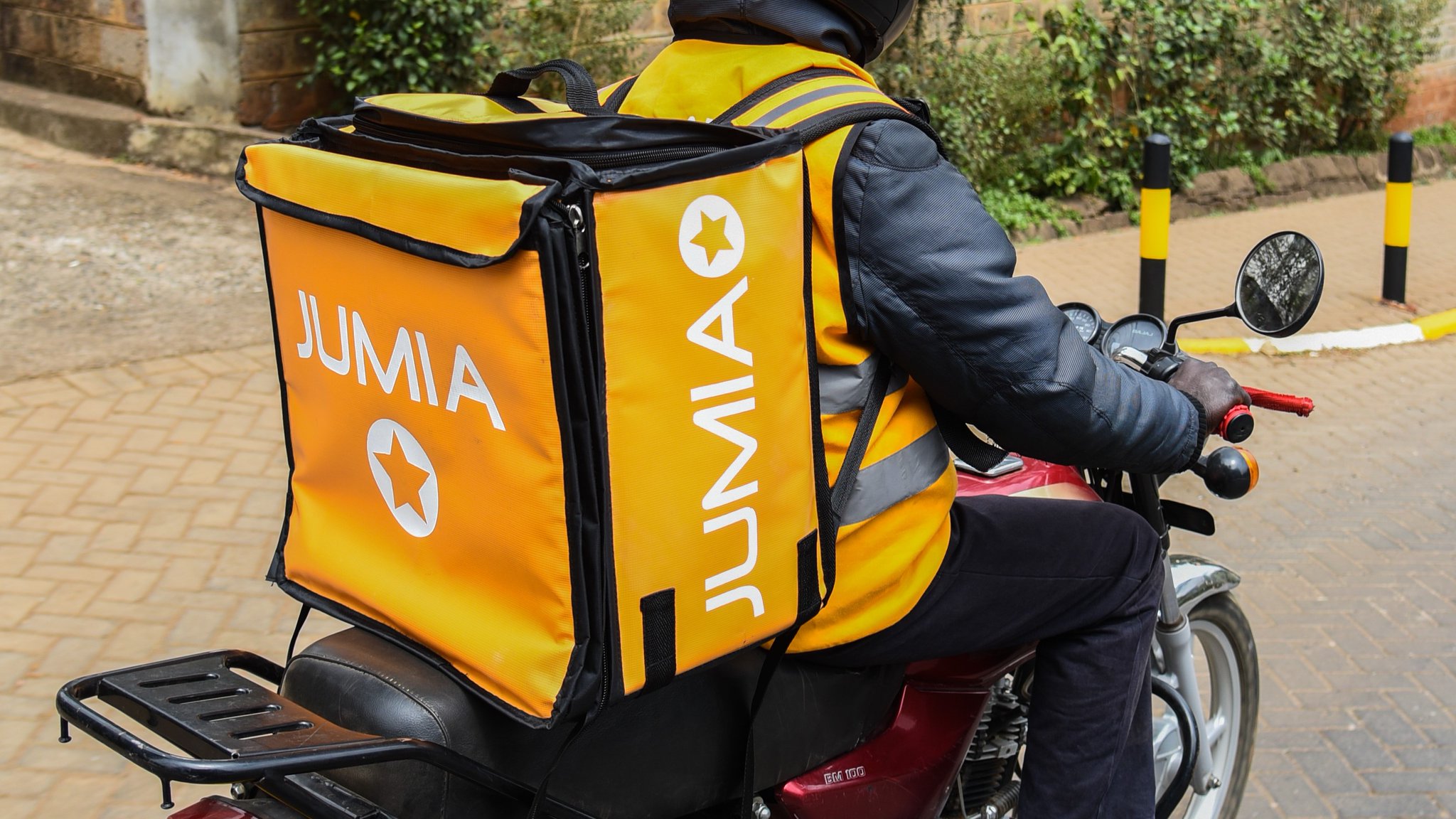Profitability has been an ongoing theme for Jumia since it went public in 2019. Each time the pan-African e-commerce platform releases its quarterly financials, investors and tech stakeholders dwell on its adjusted EBITDA and operating losses.
While the company’s financial results in the last couple of years have detailed slow and steady growth, Jumia’s continuous losses are a recurring cause for concern. A few investors that have spoken to TechCrunch believe the e-commerce giant is light-years from achieving profitability, and it’s not difficult to understand their perspective.
Jumia’s adjusted EBITDA throughout 2019 stood at a loss of €182.7 million (about $204.5 million). In its 2020 financials, the company said it had demonstrated meaningful progress on its path to profitability, improving its adjusted EBITDA deficit to a loss of €119.5 million that year (around a $136.3 million adjusted loss).
Co-CEO Jeremy Hodara reiterated this in an interview with TechCrunch referencing the company’s reduced losses in Q4 2020. “We’ll be trying to do so every quarter. We want to go about it by improving the efficiency of the business and opening new avenues for growth,” Hodara said. But by the end of 2021, Jumia’s adjusted EBITDA losses ended at $196.7 million, a 44% increase from the previous year.
Although the e-commerce company started 2021 on a good footing, reducing losses a bit in the first quarter, it reverted to its old method of executing aggressive advertising, which it had slowed during the pandemic. As the company grew its GMV, orders, quarterly active customers and revenue in the subsequent quarters, its losses compounded, particularly in Q4, when it reached $70 million, a 107% year-over-year increase.
Sacha Poignonnec, the company’s other co-CEO, told TechCrunch in an interview last month that Jumia plans not to exceed $70 million of losses in future quarters.
“We are stabilizing our level of marketing and investments,” he said. “There will be some fluctuations here and there, but we will reduce our losses below this peak we had in Q4.” Jumia anticipates a loss of not more than $220 million this year, which would surpass 2021’s numbers.
Jumia has expanded its results along many e-commerce metrics that matter since going public: orders, revenue, user base and GMV. The company has also improved its monetization outlook with JumiaPay (the fintech recently acquired licenses to process payments for third-party businesses in Egypt and Nigeria) and its logistics arm. Yet its path to achieving profitability remains arduous, perhaps even more so as it enters the quick commerce (q-commerce) space.
Q-commerce: Good or bad idea for Jumia?
One strategy that has proved a masterstroke for Jumia in the last two years is lessening its dependence on phones and electronics, instead concentrating on fast-moving consumer goods (FMCG) and everyday items.
FMCG are the company’s fastest-growing category. On its site, customers can order products ranging from beverages and canned foods to cereals and cooking oils. The delivery time for these items ranges from three days to a week. But Jumia has begun working on a subcategory — in the form of a q-commerce offering — in Lagos, where customers can get groceries delivered in less than an hour.
“The quick commerce initiatives for grocery are still in the early days, and we are still piloting it,” Poignonnec said when queried about Jumia’s move into q-commerce. “On this pilot, it’s a bit early to comment because we are watching it also. But the growth we see in our grocery category comes from the usual Jumia platform, and whatever else is coming, if the pilot is successful, will be incremental to that.”
Jumia is looking to pilot this offering across all of its 11 markets; Nigeria, Ivory Coast, Egypt, Kenya and Morocco have the highest priority based on their dark store capabilities. It already runs three dark stores in Ikeja, the capital city of Lagos, Nigeria. And though it makes deliveries for other supermarkets and shops to customers within an hour, the company’s designated q-commerce platform, Jumia Food Mart, is designed to make deliveries in 10 to 30 minutes with its network of riders.

A Jumia rider. Image Credits: Jumia
Sources say Jumia plans to list over 1,800 SKUs — items that include bread, cereals, baby care items, beverages, condiments, snacks, personal and home care items, dairy, and fresh produce — and make over 900 available based on customers’ needs. So far, the average order value from customers who have tried out the offering is around $7 (N3,000), the sources said.
Any sort of consumer delivery these days revolves around speed and convenience. Therefore, Jumia’s foray into fast grocery delivery represents this pandemic-created moment.
In the U.S. and Europe, companies such as Gopuff, Flink, Getir, Gorillas, and JOKR have raised millions — and in some cases, billions — to meet customers’ insatiable needs in record time. There’s less activity in Africa, though well-funded companies such as Rabbit and Breadfast are based in Egypt.
As a traditional e-commerce platform, Jumia has built a network that involves merchants, warehousing and last-mile delivery. This combination has allowed it to spin off a food delivery business that is now its second-fastest-growing category (86% year over year in Q1 2022). It expects to do the same with grocery delivery.
“I think this [grocery delivery] is exciting because it’s also highly synergistic with the rest of the business,” Poignonnec said. “We are leveraging the best of the Jumia Food platform, which is the instant delivery capabilities, and leveraging the relationship we have with the suppliers and the warehousing capabilities we have developed. So the combination of those assets creates this opportunity to operate quick commerce very well.”
And though it seems counterproductive for a company that says it wants to achieve profitability to venture into quick commerce — a space known for questionable unit economics, notoriously thin margins, and synonymity with unprofitability — some founders in Nigeria’s e-commerce space that spoke with TechCrunch think it presents an opportunity for Jumia to boost its revenues.
“In other categories with higher margins like fashion and electronics, you’ll need to spend a lot of money in marketing and acquiring users. The problem is that these users might not buy from Jumia every month, and it becomes a problem for revenue making,” one of them said. “But they can buy groceries regularly and — especially when it’s quick — it can be a long-term revenue stream.”
There’s still cause for concern, though. For instance, Europe has a much larger grocery shopping appetite than Africa. Despite that, its q-commerce companies are going through a market correction as they conduct mass layoffs and scale back their efforts. Also, the average transaction value for most q-commerce players hovers around $23, thrice the price that takes place on Jumia, thus revealing a poor market. Sources say that Jumia runs free deliveries for grocery orders above N4,000, around $8, as an incentive to increase their average spend on the grocery platform.
Q-commerce has yet to take off in Africa as it has in other regions globally. If Jumia intends to be a pioneer with the likes of Rabbit, Breadfast, Appetito and other upstarts — sources say Konga, an e-commerce platform and old-time Jumia competitor, might join the fray — it should be ready to burn plenty of cash. (It ended the first quarter of 2022 with a liquidity position of $421.2 million, 21% of which is cash and cash equivalents).
Even then, mass adoption is not guaranteed — an experience Jumia is all too familiar with after championing e-commerce efforts across the continent for a decade.
